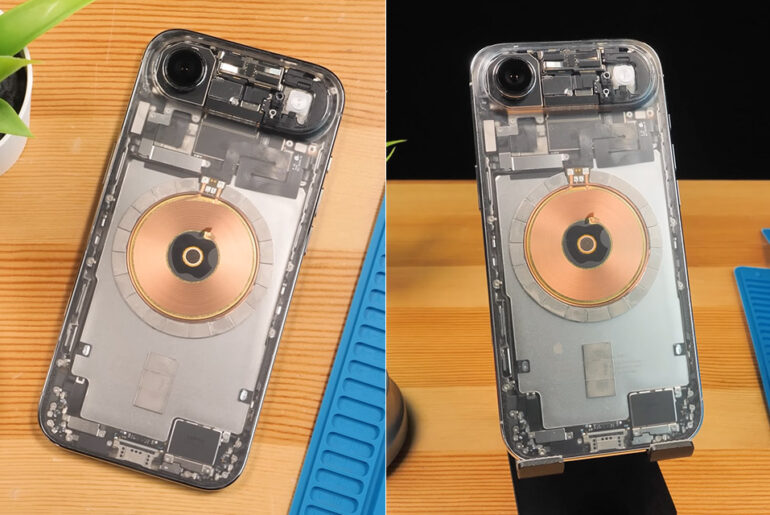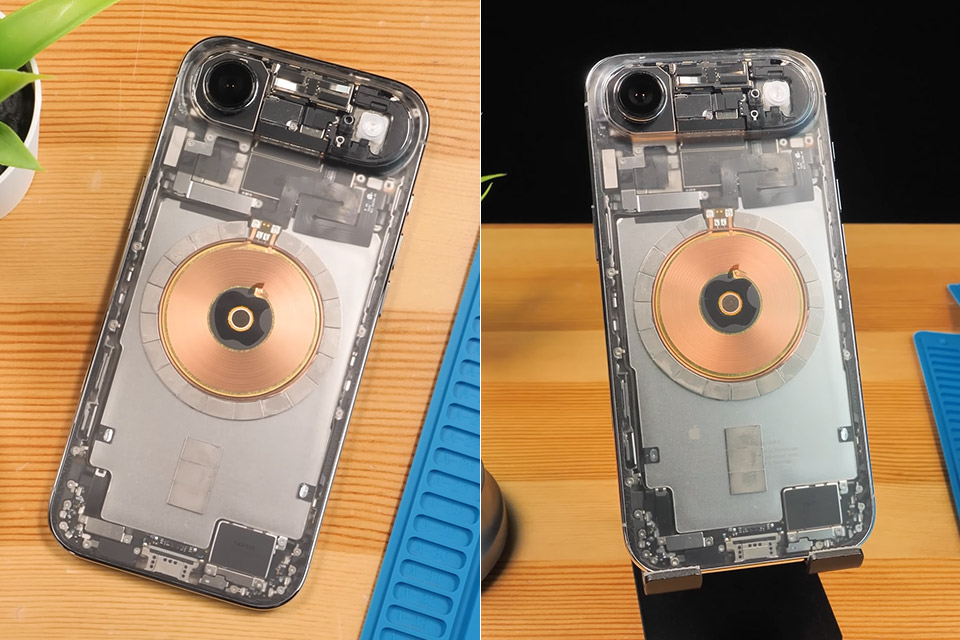
Photo credit: Phone Repair Guru
Phone Repair Guru disassembled an iPhone 17 Air to remove the rear glass and reveal what’s inside – a more difficult task than normal due to the phone’s curved camera region, which required a delicate touch. He documented every step, turning a rather simple disassembly into a nail-biter that eventually paid off with some pretty spectacular results.
First things first: he unscrewed the back and then heated the glass to remove the glue. A thermal pad was easily removed with isopropyl alcohol, and to his astonishment, the wireless charging coil came along for the ride. Down at the bottom, he discovered some thicker magnets than in prior iPhones, thicker rings that had previously escaped detection. He put those aside after peeling out the metal plates, the flash, and the rear mic, all while keeping the heat on the glass to make the work a little simpler.
- SUPER SLIM. SUPER LIGHT: Galaxy S25 Edge is surprisingly light and our slimmest S Series phone yet. You’ll want to show off this sleek, super-slim...
- OUR POWERFUL 200MP CAMERA ON OUR SLIMMEST S SERIES PHONE: Capture every memory in stunning clarity with our highest-resolution camera on a Galaxy...
- MORE POWER TO YOU: Reimagine what’s possible with Galaxy S25 Edge, featuring our most powerful processor yet. Effortlessly translate your calls,...
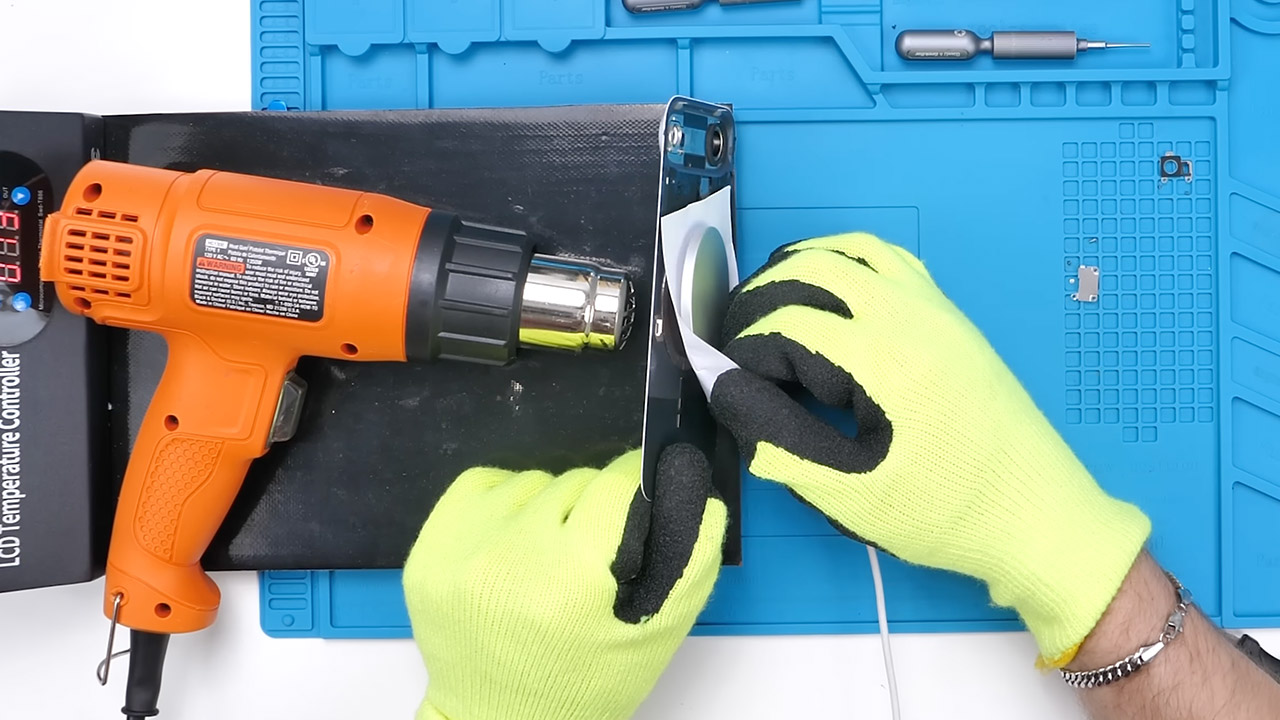
Getting the magnets out needed some skill, so he slipped on a pair of gloves to shield his hands from the heat gun’s blast, which was softening the glue that held the array together. A MagSafe puck came in helpful for yanking the magnets away, and he slipped a sheet of paper between them and the puck to prevent scratches. A handful of the magnets were slightly overlapping, but a little tweaking and repositioning brought them back together into one solid piece. Next, he needed to get rid of the adhesive residue and clips.
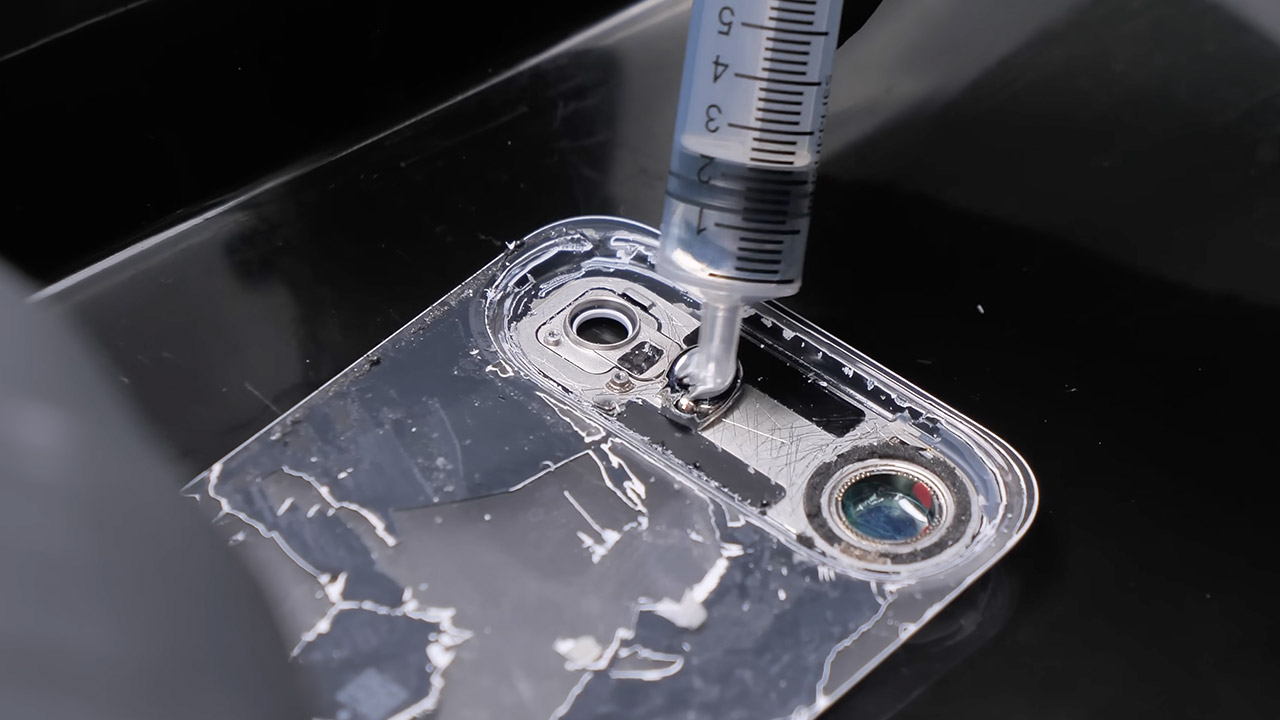
However, the camera area was the most difficult challenge. Its inward curvature is extremely steep, with the same silicone layer found in AirPods. He used heat to scrape away the silicone, exposing the metal backplate. He had intended to remove the plate using gallium, a liquid metal that simply dissolves aluminum when heated in water and distributed over the surface after removing any coatings and protecting the camera lenses. After 30 minutes, however, a quick examination with a razor blade revealed that the plate was made of stainless steel rather than aluminum. So, back to Plan B.
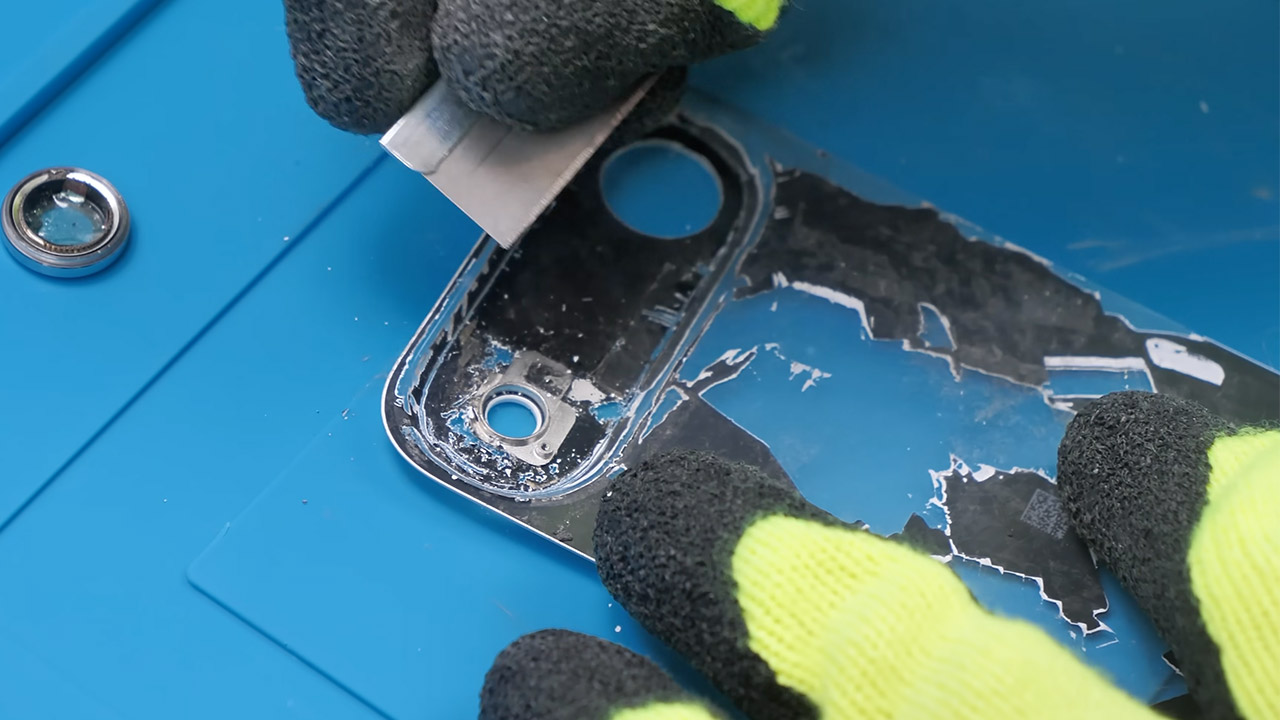
This entailed employing physical force to remove the camera region. He first used heat to weaken the welds, and smoke ascended as he lifted the main plate and cleaned up the metal parts surrounding the lens. One especially hard inner plate required some prolonged heat to remove. Finally, he was able to remove the paint from the flat glass pieces with a paint scraper on the hot surface. The Apple logo, meticulously carved into the glass, remained intact.
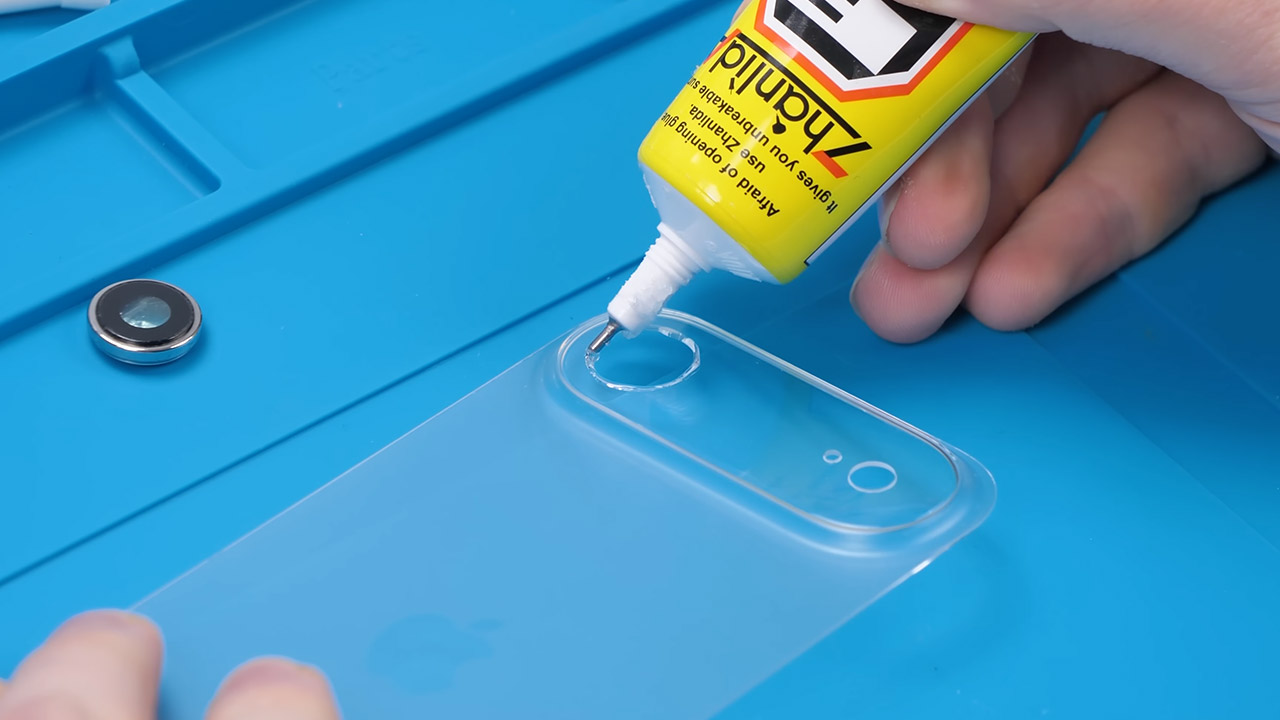
Curved glass necessitated a different strategy. Fume extractors removed harmful vapors from the soldering station while he melted paint in tight spots. The iron assisted in areas where blades couldn’t reach without cracking. Returning to the heat pad, he combined blade work and heat on the plateau’s flatter areas before ending with alcohol wipes for a clean finish. The glass was completely transparent and ready to be rejoined with the hardware.

